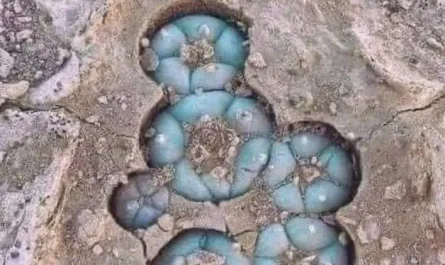Imagine standing on a small island in the Gulf of Morbihan, France, surrounded by the whispering sea and the rustling of ancient trees. Beneath your feet lies a structure that predates the pyramids of Egypt, a testament to the ingenuity and spiritual beliefs of a Neolithic people who walked this Earth over six thousand years ago. Welcome to Gavrinis, home to a truly remarkable passage tomb dating back to around 4200–4000 BC – one of the oldest surviving buildings on our planet.

The composite image offers a compelling glimpse into this historically rich site. The aerial view in the top panel reveals Gavrinis Island as a verdant jewel nestled in the Gulf. The passage tomb is clearly visible as a substantial, grass-covered mound situated strategically on a rise overlooking the water. This placement suggests a deliberate connection between the tomb and the surrounding landscape, perhaps reflecting the beliefs and cosmology of its builders. The surrounding dense woodland further isolates the site, lending it an air of ancient mystery and reverence.
Descending into the depths, as depicted in the lower panel, is like stepping into another time. The narrow passage, constructed from massive megalithic stones, feels both awe-inspiring and intimate. These aren’t just rough-hewn rocks; they are canvases etched with intricate carvings that have survived millennia. Spirals that seem to swirl with cosmic energy, complex zigzags that might represent journeys or natural forces, and other abstract geometric patterns cover the surfaces of these stone sentinels. The skill and dedication required to create these carvings with the primitive tools available at the time are truly astounding.
A Journey Through the Stone Corridors:
The passage tomb at Gavrinis is designed with a purpose. The narrow corridor likely served as a symbolic journey, leading from the outside world into a central chamber – a space believed to have held significant spiritual meaning. Perhaps it was a final resting place for important members of the community, a site for rituals, or a place to connect with ancestral spirits. The very act of entering the tomb would have been a profound experience, moving from daylight into the dimly lit, art-filled interior.
Echoes of Neolithic Beliefs and Artistry:
The carvings within the Gavrinis tomb are not mere decoration; they are a window into the minds of Neolithic people. Their recurring motifs likely held symbolic significance, possibly related to their understanding of the universe, their relationship with nature, and their beliefs about life and death. The spirals, for instance, are often interpreted as representing cycles of life, death, and rebirth, while other patterns may have been connected to celestial movements or earthly phenomena.
The sheer artistry and craftsmanship displayed at Gavrinis speak volumes about the social and cultural complexity of Neolithic societies. The ability to quarry, transport, and carve these massive stones required significant communal effort, planning, and specialized skills. This monumental undertaking suggests a hierarchical social structure and a deep-seated commitment to their beliefs and traditions.
Connecting with Our Ancient Past:
Sites like Gavrinis are invaluable because they provide tangible links to our distant past. They allow us to glimpse the spiritual and artistic expressions of communities who lived thousands of years before recorded history. Walking through the passage of Gavrinis, running your hand over the ancient carvings, is a powerful experience that transcends time. It fosters a connection with the people who built this remarkable structure and invites us to contemplate their lives, their beliefs, and their place in the grand narrative of human history.
While geographically located far from the United States, the significance of Gavrinis resonates globally. It stands as a testament to the enduring human drive to create, to express belief, and to leave a lasting mark on the world. It reminds us that even the most ancient stones can still whisper stories of the civilizations that came before us, offering invaluable insights into the foundations of human culture and spirituality. Visiting Gavrinis, whether in person or through images and stories, is a journey back in time, a chance to marvel at the enduring legacy of our Neolithic ancestors.





